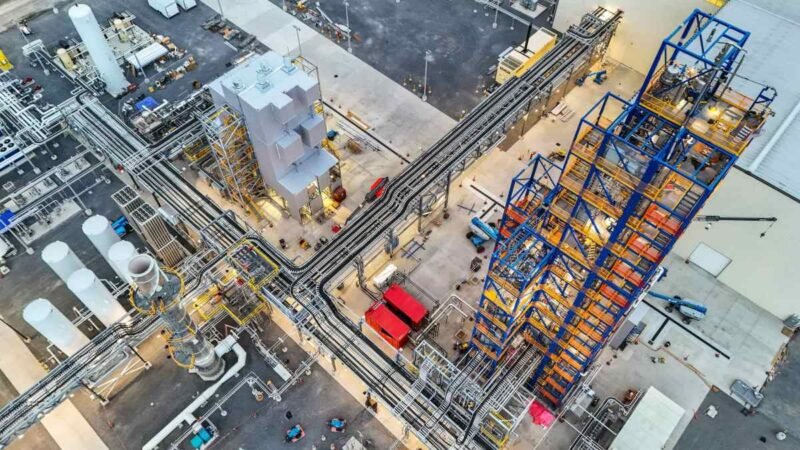Essential Insights
-
Launch of Silicon Anode Factory: Sila’s new facility in Moses Lake, Washington, is the first large-scale silicon anode factory in the West, with initial capacity for 20,000-50,000 EVs and potential expansion to support up to 2.5 million vehicles.
-
Energy Density Improvement: Silicon anodes offered by Sila can enhance lithium-ion battery energy density by up to 50%, positioning the U.S. in the competitive global battery market.
-
Strategic Partnerships: Sila has secured agreements with major automakers like Panasonic and Mercedes, while also supplying materials for drones, satellites, and consumer electronics.
-
Future Expansion Plans: Sila aims to grow beyond Moses Lake, emphasizing the need for domestic manufacturing in the U.S. to support the anticipated surge in electric vehicle demand, targeting 10 million EVs within the next decade.
Sila’s Breakthrough in Battery Technology
Sila, a startup focused on battery materials, recently opened a factory in Moses Lake, Washington. This facility represents the first large-scale production of silicon anodes for electric vehicles (EVs) in the western United States. Initially, it will produce enough materials for 20,000 to 50,000 vehicles, with plans to eventually support up to 2.5 million. The promise of silicon anodes lies in their potential to enhance the energy density of lithium-ion batteries by up to 50%. This improvement could give the U.S. a competitive edge in the global battery market, where manufacturers race to innovate.
Interestingly, Sila has already secured partnerships with major players like Panasonic and Mercedes. Besides automakers, the company also supplies materials to drone and satellite manufacturers. This diversified approach allows Sila to leverage the growing demand across multiple sectors. Their success will depend on the consistent quality of the materials produced. Initial outputs will confirm the reliability of what customers have tested previously, setting the stage for broader adoption.
A Sustainable Future in Manufacturing
Sila’s strategic choice of location facilitates not only production but also sustainability. The availability of cheap hydropower, ample land, and nearby raw materials in Washington creates an ideal environment for manufacturing. Lower energy costs are critical for the technology’s economic viability. Moreover, Sila aims to produce silicon anodes that are cheaper than traditional graphite options, especially when considering U.S. supply chain advantages. With the automotive industry’s shift toward electric vehicles on the horizon, the factory aligns perfectly with future needs.
Looking ahead, Sila’s potential expansion may allow them to meet surging demand as millions of EVs hit the road. This opportunity reflects a broader trend of domestic manufacturing revitalization. As countries become increasingly invested in sustainable technologies, Sila’s commitment to U.S.-based production strengthens both local economies and technological independence. By fostering a thriving ecosystem for battery manufacturing, Sila contributes to the future of sustainable transportation and energy efficiency, empowering the journey toward a cleaner planet.
Continue Your Tech Journey
Explore the future of technology with our detailed insights on Artificial Intelligence.
Explore past and present digital transformations on the Internet Archive.
TechV1

